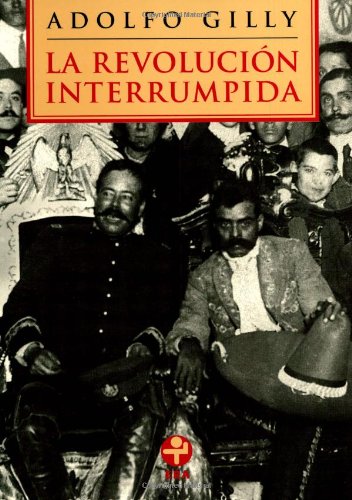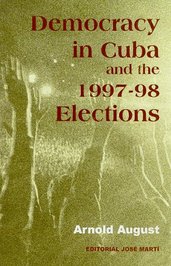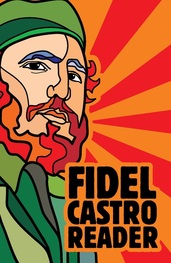The Vietnamese struggle against French colonialism was initiated in the late nineteenth century by the scholar-gentry class. Ho Chi Minh was born in 1890, and he was the son of a Confucian scholar. Forced to flee Vietnam because of his anti-colonial political activities, Ho encountered French socialism in Paris. Attracted to the teachings of Lenin for their clear and just formulations on the importance of the anti-colonial struggles in the European colonies, Ho participated in the founding of the French Communist Party in 1920. He later was educated in the Soviet Union, and he developed an understanding that was a synthesis of the traditions of Confucian nationalism and Marxism-Leninism. He was the central figure in the founding in 1930 of the Indochinese Communist Party, which formed and led a popular coalition known as the Viet Minh. It organized armed struggle against the Japanese occupation, and it formulated a program of Vietnamese independence, the distribution of land to peasants, and the formation of a worker-peasant government. Its courageous resistance to foreign occupation and its politically intelligent program enabled the Viet Minh to attain the support of the people.
Immediately following the Japanese surrender, armed militias of the people began to take control of the structures of local government, doing so in the name of the Viet Minh. In this context, Ho’s forces entered Hanoi, and on September 2, 1945, Ho Chi Minh declared the independence of the Democratic Republic of Vietnam. France, however, refused to accept Vietnamese independence, and it undertook the reconquest of Vietnam. The French initiative included the establishment of a puppet government in the southern region of Cochin China, a zone of extensive French-owned rubber plantations, declaring a state separate from the Democratic Republic of Vietnam. The Vietnamese, however, sought the independences of Vietnam, with unification of the territory of the pre-colonial Vietnamese Kingdom. As a result of the contradictory interests and the impossibility of reaching an accord, the French Indochina War began in 1946. The Vietnamese nationalist forces were forced to abandon the capital city of Hanoi, and the French established a puppet government, headed by former Vietnamese emperor Bao Dai. However, the nationalists waged an effective armed struggle, culminating in a shocking defeat of the French forces in the 1954 battle of Dien Bien Phu. The 1954 peace agreement recognized the independence of the Democratic Republic of Vietnam, located north of the seventeenth parallel and led by Ho Chi Minh, and the government of the emperor Bao Dai, located south of the parallel. The peace talks and accompanying documents led to the understanding by all parties that the division of the county would be temporary, and that the elections would be held in 1956 to unify the country.
That Ho Chi Minh would win the elections called for in the 1954 Paris documents was recognized by all parties, so the United States encouraged the Dai government to consider itself as the permanent government of South Vietnam, albeit a government under U.S. tutelage and support. With little possibilities for a peaceful transition to a unified and independent Vietnam, the Indochinese Communist Party organized the National Liberation Front (NLF) of South Vietnam, a military-political coalition of popular organizations, formally established on December 20, 1960. It was successful in winning the support of the people, such that by 1964, the NLF controlled 80% of the territory of South Vietnam. The war against the NLF, carried out by the government of South Vietnam with U.S. support, had been lost by 1964. Meanwhile, in the North, the Democratic Republic of Vietnam initiated a transition to socialism in 1964, with the redistribution of land and the development of state and cooperative ownership of industry.
The United States, however, was politically unable to accept an NLF victory. As Secretary of Defense Robert McNamara wrote years later, U.S. leaders were concerned with the emergence of communist and progressive governments in China, Vietnam, North Korea, and Indonesia, and they considered the implications for the decline of U.S. economic presence and political influence to be unacceptable. Up to that point, the U.S. strategy had been to support South Vietnam, with the understanding that the South Vietnamese would have to win the struggle in their own right. In 1965, the USA abandoned this strategy and turned to direct military intervention. The United States moved from 23,000 military advisers at the beginning of 1965 to 180,000 troops by the end of the year and to 280,000 by the end of 1966, culminating in 550,000 U.S. troops by 1968. In addition, from 1965 to 1968, the USA engaged in an extensive bombing campaign, with targets in both the North and South. During the three-year bombing campaign, three times as many tons of bombs were dropped than in all the combat zones of World War II. The ground war and the bombing campaign resulted in the death of four million Vietnamese, nearly half of them civilians.
The U.S. military escalation of 1965-1968 could not shore up the government of South Vietnam. The increased U.S. military presence exposed the South Vietnam government as a puppet regime, undermining its claims to be representing a nationalist force and further delegitimizing the government. NLF troops, increasingly organized as a regular army, repeatedly engaged U.S. troops successfully, choosing the time and location of the battles. In addition, the South Vietnamese army had become unreliable as a fighting force, as a result of repeated defeats and desertions. Moreover, the political will of the government of Ho Chi Minh in the North to provide support for the NLF in the South remained unbroken, in spite of the extensive bombing. On January 30, 1968, the NLF launched attacks on various cities. The “Tet offensive” was politically effective, for it demonstrated the vulnerability of the South Vietnamese governments in zones under its control. As a result, the U.S. government agreed to peace negotiations and began a gradual reduction of U.S. troops. The negotiated peace accord called for the total withdrawal of U.S. troops, which was carried out by March 1973. In 1975, the government of South Vietnam collapsed, in the face of the united military action by the government of the North and the NLF. The nation was unified, and a constitutional assembly established the Socialist Republic of Vietnam. (For various posts on Vietnam, the Vietnamese Revolution, and Ho Chi Minh, see the category Vietnam).
The Vietnamese struggle for its right to be a sovereign nation surely stands as one of the most heroic struggles in human history. As it was reaching culmination, a heroic popular struggle on the other side of the earth was passing through its decisive historic moments. The Cuban Revolution was initiated in 1868, but internal divisions frustrated the attainment of its goals of independence and abolition. In the 1880s and 1890s, Jose Martí brought a greater clarity of vision, calling for a unified struggle of the popular classes against Spanish colonialism, U.S. neocolonial pretensions, and the Cuban national bourgeoisie. However, the triumph of the Cuban Revolution again was frustrated, this time by the U.S. military intervention of 1898. In the 1920s, the popular revolution was renewed, forged by a synthesis of the nationalism and ethical vision of Martí with Marxism-Leninism. It culminated in the Revolution of 1930 and the government of 100 days in 1933. However, the Revolution again was frustrated, as a consequence of U.S. interference, which brought Batista to power.
But the hopes of the Cuban people for a more just and dignified nation could not be permanently denied. The July 26, 1953 attack on the Moncada Barracks galvanized the people to heroic action again, culminating in the revolutionary war of 1957-1958 and the taking of power by the revolutionary movement led by Fidel, in spite of U.S. maneuverings to prevent it. The Revolution in power took decisive revolutionary steps in 1959 and 1960, most notably a redistribution of agricultural lands and nationalization of properties owned by U.S. corporations. These steps revealed the essentially anti-neocolonial character of the Cuban Revolution. The global elite, with consciousness of the implications of such decisive revolutionary steps for the transformation of the neocolonial order, could not let the Cuban Revolution stand. Thus began the commercial and financial blockade of Cuba, which continues to this day. However, from 1961 to the present day, the Cuban revolutionary vanguard has led the people in a remarkable demonstration of persistence in its socialist project and in its right to be a sovereign nation, which decides for itself the character of its political-economic system. (For various posts on the Cuban Revolution from 1868 to 1962, see the category Cuban History).
The Cuban revolutionary government, from the beginning, consistently supported the Vietnamese struggle to establish a unified and socialist nation. On December 2, 1960, Fidel declared Cuba’s intention to establish diplomatic relations with the Democratic Republic of Vietnam. On September 25, 1963, the Cuban Committee for Solidarity with South Vietnam was founded, directed by Melba Hernández, hero of the July 26, 1953 attack on the Moncada Barracks. In 1966, a Cuban delegation, headed by Cuban President Dorticos and Raul Castro, visited Vietnam. During the visit, Dorticos declared:
Vietnam is today the vanguard of all the peoples of the world, because the Vietnamese people has fought in defense of all peoples and of the socialist camp; and because the Vietnamese people has shed its blood and sacrificed its best sons and daughters, defending the socialist camp and all of the peoples of the world from the aggression of U.S. imperialism. Therefore, we should not speak of aid but the contribution that we are all obligated to lend to the people of Vietnam. . . . We proclaim the necessity of the unity of the socialist camp and all the revolutionaries of the world in support of Vietnam (quoted in García Oliveras, 2010:247).
Our two revolutions, the Vietnamese Revolution and the Cuban Revolution, one in Southeast Asia and the other in Latin America, constitute two events of historic importance and an enormous contribution to the cause of the international revolutionary movement. . . . We are completely convinced that our two peoples and our two Parties will march strongly united, as comrades that confronted the same enemy of U.S. imperialism. And we have infinite confidence in the full victory of our peoples. Our Party and our people always will be in faithful solidarity with the Vietnamese cause (quoted in García Oliveras, 2010:249).
Similar to what we have seen with respect to China (see various posts in the category China), the pragmatic approach to socialism in Vietnam since 1986 has resulted in significant economic growth. From being a net importer of rice, Vietnam has become the second largest exporter of rice in the world. And it has become the world’s largest exporter of coffee, rubber, textiles, and footwear. In the last two decades, more than twenty million persons have been lifted out of poverty. The percentage of children of primary school age attending school has reached nearly 100% percent, and life expectancy has reached seventy years.
In spite of the evident economic and social gains, the Vietnamese Revolution recognizes that there have been social costs of the Renovation. In addressing this issue, the present emphasis is on the total eradication of poverty, the reduction of infant mortality, the reduction of the gap between the rich and the poor, the lending of greater attention to the mountainous zones, the generation of greater opportunities for the most disadvantaged, and environmental sustainability.
In a manner paralleling Vietnam, Cuba also has developed a pragmatic approach to socialism, with fidelity to principles but not with ideological rigidity or ultra-Leftist idealism. From the beginning, the Cuban approach to socialism was adapted to particular national conditions, not copying models from Eastern European, in spite of its economically necessary insertion into the socialist bloc. In the early 1990s, with the collapse of Soviet Union and Eastern European socialism, Cuba expanded space for small-scale private capital and for joint ventures with foreign capital. In 2012, Cuba adopted a social and economic model that seeks to improve productivity by further expanding space for small-scale private capital, cooperatives, and foreign investment, always regulated by the state and developed in accordance with state planning. At the same time, Cuba seeks to further develop its capacities with respect to high value added goods and services, such as biotechnology. Cuba seeks to develop an economy that is capable to responding to the basic needs of the people and to provide a modest level of prosperity, in the context of a socialist principles and a socialist political-economic system.
Vietnam has become the second commercial trading parting of Cuba from Southeast Asia, after China. There are a growing number of Vietnamese companies doing business with Cuba as well as increasing Vietnamese investments in such areas as construction, renewable energy, industry, tourism, and the development of infrastructure.
The commemoration of March 28 to March 30 included various events. They included the granting to Raúl Castro by the Vietnamese Communist Party of its highest award; the signing of an agreement of cooperation by the youth organizations of the two countries; a business forum to identify new opportunities; and a visit to a monument to Ho Chi Minh in the City of Havana.
At the closing ceremony of the Encounter of Solidarity between the youth of Vietnam and the youth of Cuba, Nguyen Phu Trong, Secretary General of the Communist Party of Vietnam, pronounced the following words.
In the history of the contemporary world, there are very few cases of a relation as special as that between our two parties, states, and peoples. . . . Comandante Fidel Castro affirmed that, in spite of the great geographic distance of nearly half the planet, there are many similarities between our two peoples. For Fidel, our friendship and fraternity was born and has grown in the context of the historic similarity of two peoples that have struggled against a common enemy.
For the length of more than half a century, following our establishment of diplomatic relations (12/2/1960), our two peoples always have been shoulder-to-shoulder, in the struggle for national independence and liberty; and today, we are united in the cause of the construction and defense of a socialist country in each nation. Truly, this relation of friendship, solidarity, and fraternity has become a symbol of our era and an invaluable treasure that both parties and peoples ought to defend, preserve, and bequeath to future generations.
Vietnam remembers forever, with profound gratitude, the solid support and sincere aid that the Communist Party and the people of Cuba have lent to the people of Vietnam, in our struggle in the past for national independence as well as in the present construction and defense of our nation. This clear and faithful solidarity and noble internationalist spirit of Cuba has been shown in the words of Comandante Fidel Castro: “We are prepared to shed our own blood for Vietnam” . . . . For his part, President Ho Chi Minh also affirmed that “Vietnam and Cuba are thousands of miles apart in distance, but they are like brothers of the same family.”
Taking a retrospective look at the historic road of the special relation between Vietnam and Cuba, we have the right to be proud of the exemplary ties of fraternity, of traditional friendship, of integral cooperation, and of solidarity and fidelity between the parties, states, governments, and peoples of Vietnam and Cuba. Our ideals have become interwoven and our hearts beat with the same rhythm. This relation between our parties and peoples is truly a priceless treasure.
García Oliveras, Julio A. 2010. Ho Chi Minh El Patriota: 60 años de lucha revolucionaria. La Habana: Editorial de Ciencias Sociales.

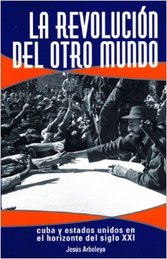
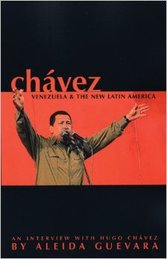
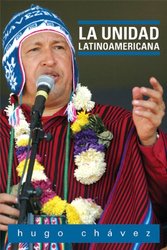


 RSS Feed
RSS Feed
